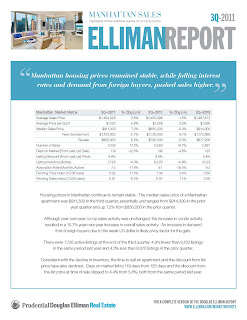Buy the buyers.
It’s a novel way to jump-start the housing market and an idea, originally credited to investor Warren Buffett, that seems to make sense.
A Senate proposal from the bipartisan duo of NYC Democrat Chuck Schumer and Utah Republican Mike Lee would grant three-year nonimmigrant visas to qualified foreign real estate buyers.
Little more than a week after it’s unveiling, the new concept – which could lure new buyers to the New York City real estate market - is generating more heat than light.
The suggested law includes caveats aplenty. Buyers must spend at least half million dollars in cash for their US property, and must actually live in one of their co-op, condo or homes for at least six months – triggering the need to pay taxes to the IRS.
The visa term can be extended in three-year increments, but only pending a reapplication and approval procedure. Permission to work in the US, on the other hand, is not part of the deal.
In addition, buyers must satisfy all US Immigration requirements and pass a security check. Unsavory characters, terrorists, disgraced dictators and deadbeats are, let’s hope, not able to make the cut.
New overseas investors must be adequately wealthy to complete an all-cash real estate transaction, and sufficiently comfortable to do so without having to work. Forced to spend six idle months in their American domiciles, the theory goes, these investors would spend their long American sojourn enriching the economy in countless ways. They’d buy food, clothing, gas, cars – and entertain themselves with expensive concerts, museums, theaters and sporting events. Given the restrictions, it seems likely for buyers to gravitate to New York City . Where better to lay for six months than the capital of all things exciting?
Still, nay-sayers blast the proposed legislation as an assault on the American Dream; one that, they say, could undermine US Immigration policy.
Meanwhile, advocates point out that the same legal provisions work just fine in Canada, with a healthier economy – and without a terrorist attack.
In the United States, foreign buyers already account for more than $80 million dollars in annual real estate sales, a 24 per cent increase over the previous year (according to the National Association of Realtors). And that’s without any kind of visa thrown in as an incentive and, without any National Security incidents.





